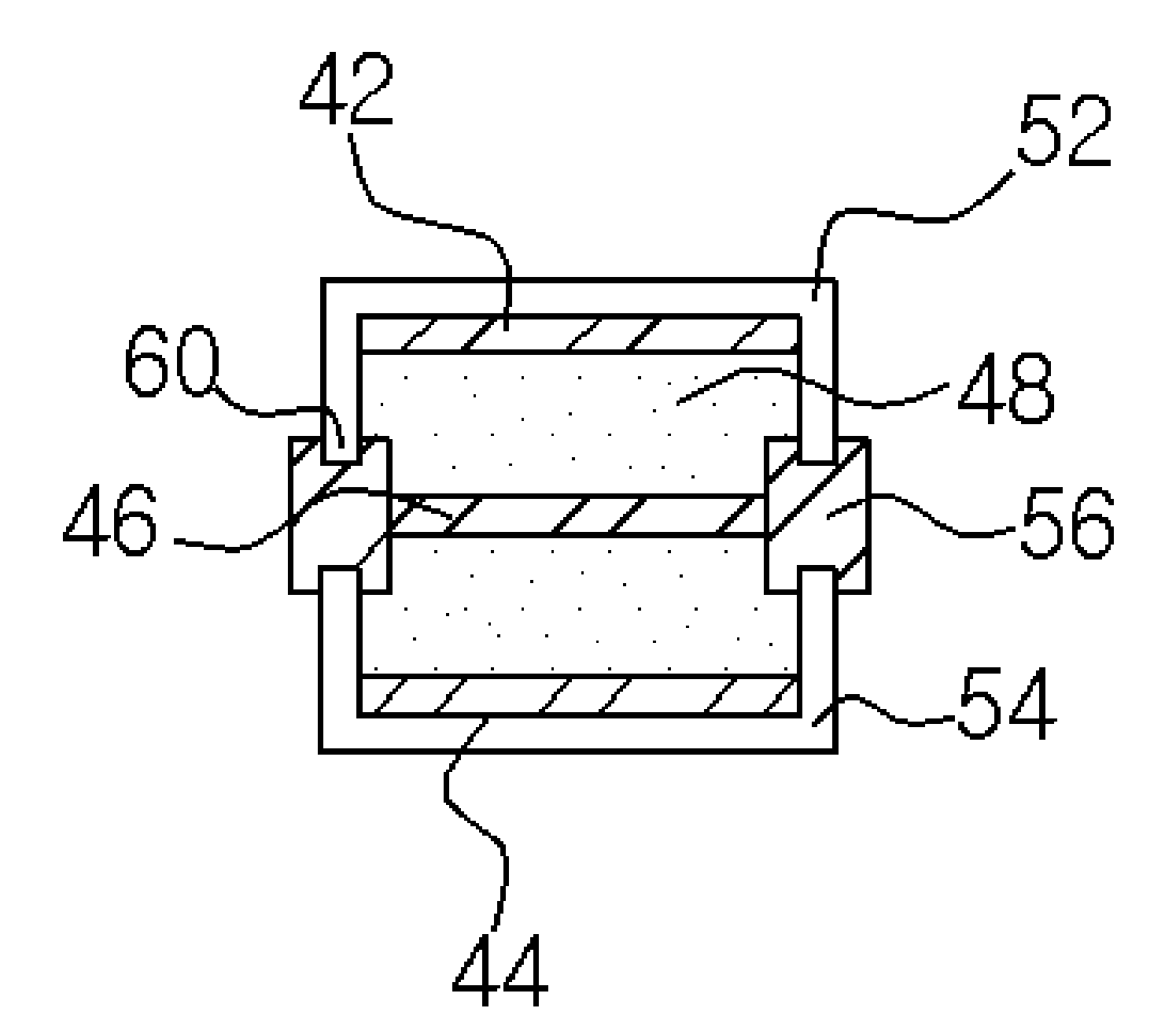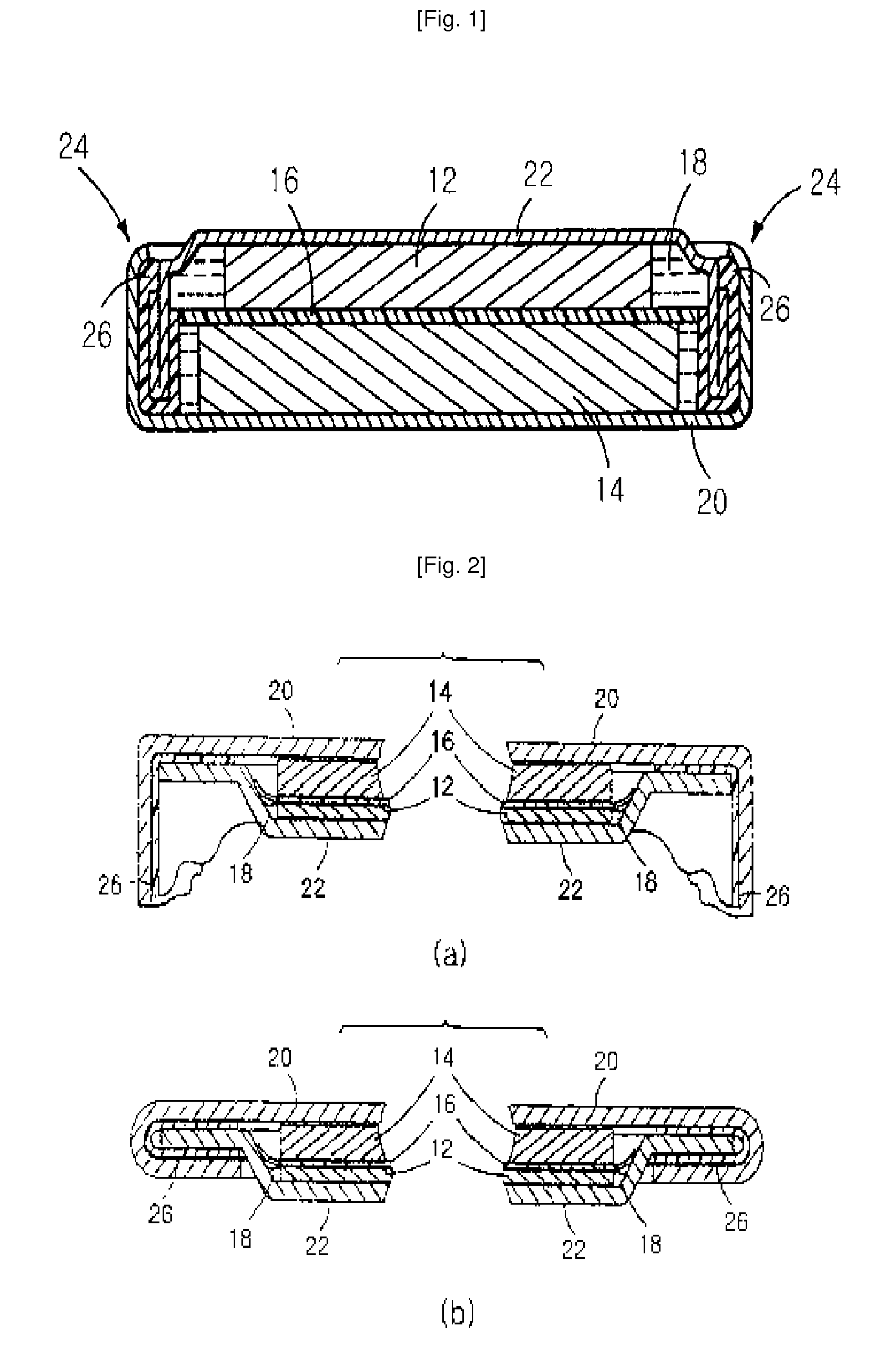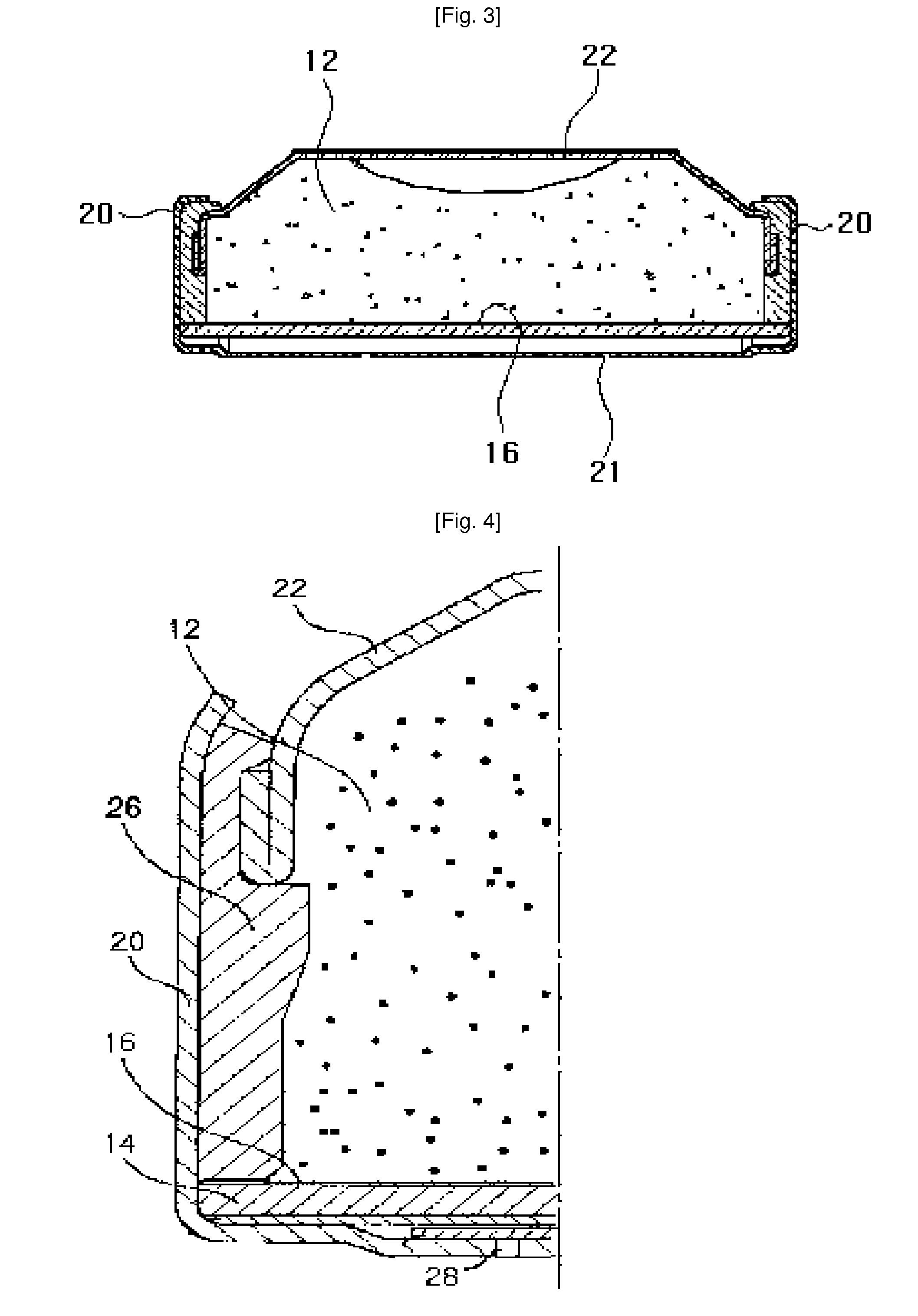Battery and Method for Producing the Same
- Summary
- Abstract
- Description
- Claims
- Application Information
AI Technical Summary
Benefits of technology
Problems solved by technology
Method used
Image
Examples
Embodiment Construction
[0064]Hereinafter, the preferred embodiments of the present invention will be described in detail with reference to the accompanying drawings.
[0065]FIG. 6 is a sectional view of a button cell battery according to an embodiment of the invention.
[0066]The button cell battery of this embodiment includes a first can 52 and a second can 54 having a U-shape cross-section, and a body 56. Inserted inside of these are a first electrode 42 and a second electrode 44, a separator 46 for insulating them, and an electrolyte 48.
[0067]The first and second electrodes 42 and 44 are accommodated inside of the U-shape cans 52 and 54. The end portion 60 of the cans 52 and 54 is protruded higher than the electrodes 42 and 44. The first and second cans 52 and 54 are made of a conductive material and may be fabricated through a pressing process. The first electrode 42 is contacted with the first can 52 for electrons to be able to transfer and thus the first can 52 serves as an external terminal of the firs...
PUM
| Property | Measurement | Unit |
|---|---|---|
| Pressure | aaaaa | aaaaa |
| Shape | aaaaa | aaaaa |
Abstract
Description
Claims
Application Information
 Login to View More
Login to View More - R&D
- Intellectual Property
- Life Sciences
- Materials
- Tech Scout
- Unparalleled Data Quality
- Higher Quality Content
- 60% Fewer Hallucinations
Browse by: Latest US Patents, China's latest patents, Technical Efficacy Thesaurus, Application Domain, Technology Topic, Popular Technical Reports.
© 2025 PatSnap. All rights reserved.Legal|Privacy policy|Modern Slavery Act Transparency Statement|Sitemap|About US| Contact US: help@patsnap.com



